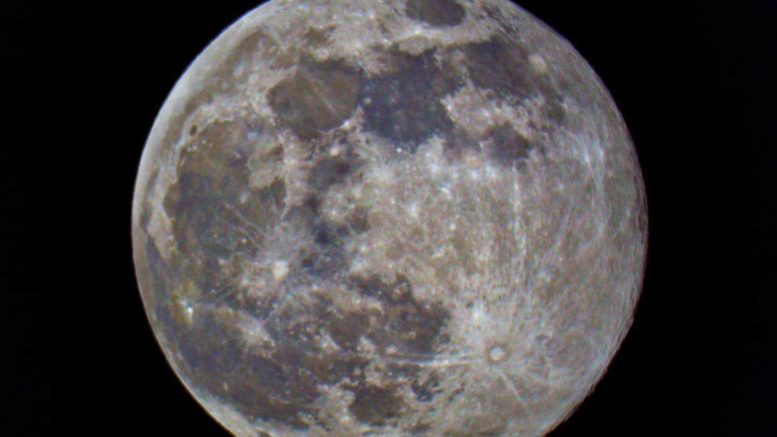Getting kids into using a telescope and astronomy can be challenging at times, plus taking the time to go out to somewhere with dark skies takes time, planning, and more effort than setting up your telescope at home. However, here are 5 recognizable and easy astronomy targets for you to view with your telescope at home with kids. These objects are not only safe to view, but reliable as they are always great to look at. Plus, these objects are reliably available and easy to find in the sky, even from light polluted skies.
3 of these objects are from the Earth’s celestial neighborhood, and the remainder are … The keys will be finding an area and time that you have an unobstructed view, which can be challenging the first time at a new place or using a new telescope. The great thing about these objects is that they are all visible throughout the entire year for viewing!
The Moon
The moon has been inspiring generations of humanity, because of its predictable orbit and presence in the sky. These same features make the moon a great item to view with kids because the moon will be visible from anywhere, and a great deal of detail is visible using home telescopes. What is fun is to see the moon’s terminator, which is the dividing line marking the edge between day and night on the moon. For craters at or near the terminator, the detail will be greater than areas not near the terminator.
Saturn
Visible during the summer months of July, August, and early September in the Northern Hemisphere, Saturn is an easily recognizable target in telescopes. In addition to being easily recognized, Saturn is on this list because it’s visible to telescopes with at least 4 to 6 inches of aperture. Telescopes of this size will provide the necessary clarity and detail to observe Saturn’s rings and some of its larger moons. What is amazing is that with telescopes of that size, the viewer can see the Cassini gap between the planet and the rings. People remember the first time they see Saturn through a telescope, it is THAT powerful.
Jupiter
To the naked eye, the planet will appear as a bright pinprick of light, but a good pair of binoculars or a telescope will reveal it as a small, pale disk. A telescope will be able to reveal things on the plant such as the Great Red Spot, and the Galilean moons! It is really an amazing site to see!
Orion Nebula
Visible from the winter months in the northern hemisphere and peaking in January and February, it is indeed possible to see it in a suburban location in the night sky with the naked eye. It is easy to locate as the nebula can be seen in the Orion constellation, forming part of the hunter’s sword just south of the belt. It is an easy item to view and looks great in telescopes, plus is a great thing to photograph with DSLRs and other photography tools.
Messier 45 (The Pleiades)
The Pleiades, also known as the Seven Sisters and Messier 45, is an asterism of an open star cluster stars in the northwest of the constellation Taurus. The Pleiades are winter stars and are visible from the Northern Hemisphere between October and April. They’re visible all night during November and December, making this the best time to spot them.
Make sure to follow us on Twitter and Instagram, and make sure to check out other Top 5 articles for more articles like this.

Be the first to comment on "Top 5 Easy And Recognizable Astronomy Targets For Kids To View"